This Scottish Castle Garden Is a Nature Lover's Paradise—Here's How to Visit
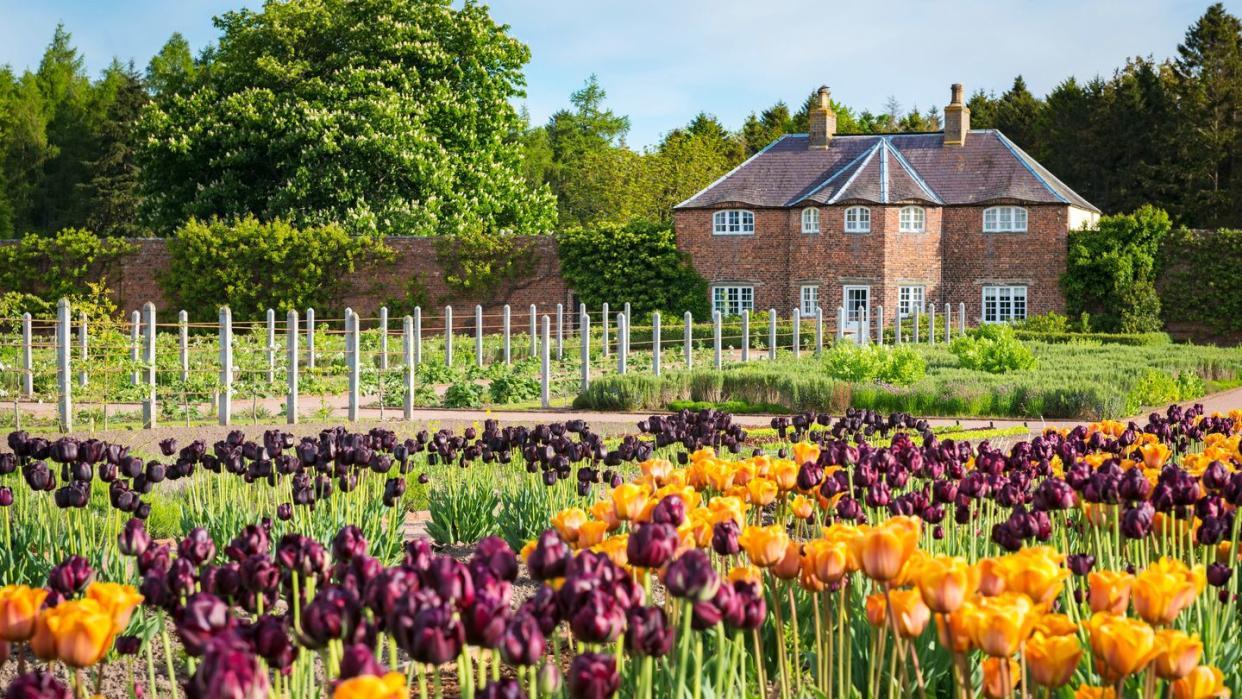
The vastness of the walled garden at Gordon Castle, 50 miles east of Inverness in the Highlands of Scotland, is breathtaking; one can hardly see the wall at the other end. At around eight acres, it is one of the largest in the U.K. And today, more than 200 years after its first iteration was plotted out for Alexander, fourth duke of Gordon, beds and borders brim with colorful flowers and vegetables, all laid out on a formal grid of wide paths with a traditional dipping pool surrounded by drifts of lavender, rippling out from the center of the garden in waves. Birds, bees, and butterflies abound.
It is a place of great beauty and ambition, and one of steadfast labor. Owners Angus and Zara Gordon Lennox are the ones putting in the graft, along with head gardener Ed Bollom (late of Highgrove, the King’s Gloucestershire billet), his team of two, and a contingent of volunteers. “There is no pile of money here,” admits Angus, who is descended from that early duke and, with his wife, Zara, took over running the estate in 2008 with the idea to put the walled garden back into productive use and create a sustainable income from it.
The 15-foot-high brick walls were in a pretty good state; however, of the garden’s original purpose, there was little trace, save for 250 heritage fruit trees trained against the walls and one of nine Edwardian glasshouses. The whole place was grassed over.
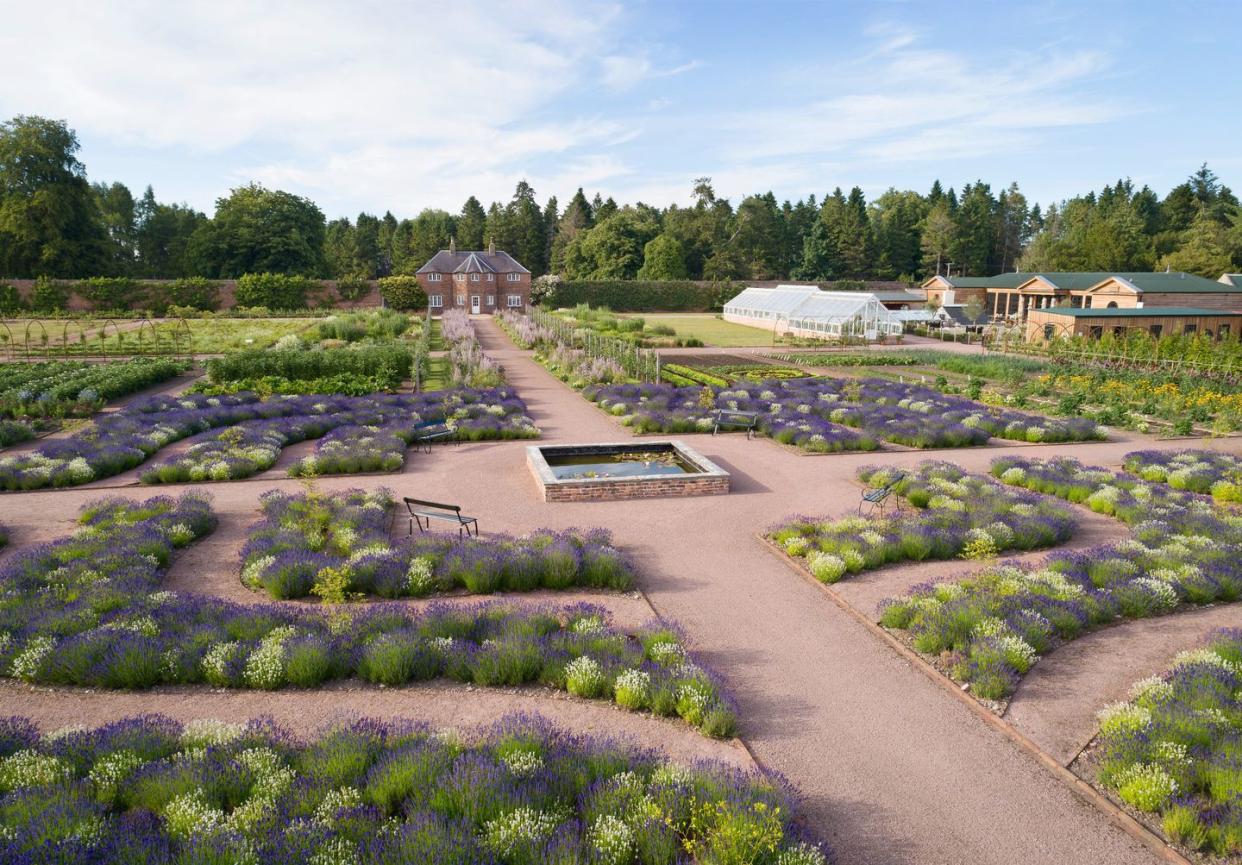
Growing fresh produce that went to the local market in this remote area of northeastern Scotland was not going to be economically viable. “We had to think of products with a shelf life so that we could sell them far and wide,” says Zara. They hit on herbs and fruits that could be used as ingredients with an uplift: for example, apples for juice and cider; onions and tomatoes to go into chutneys; lavender and mint to make botanical gin; and lavender and rosemary to create essential oils for lotions and potions (they now produce more than 200 products sold to luxury hotels, restaurants, and shops throughout the U.K. and overseas).
“Then we thought, If we are creating this range from the garden, people might want to see their provenance. Instead of just having it as a market garden in a field, we ought to make it beautiful.”
Enter Arne Maynard, one of the U.K.’s leading landscape designers with a talent for bringing historic spaces into the 21st century. On first viewing, he notes, “It had such an atmosphere, with all those brick walls.”
Undaunted by the garden’s size, he created a master plan with a network of paths on a grid, much as there would have been originally. “It was a big, overwhelming space, so I imagined subdividing it into smaller, more intimate areas, stitching together different textures, atmospheres, and heights but very much respecting the tradition of the old walled garden,” he says.
The Grounds
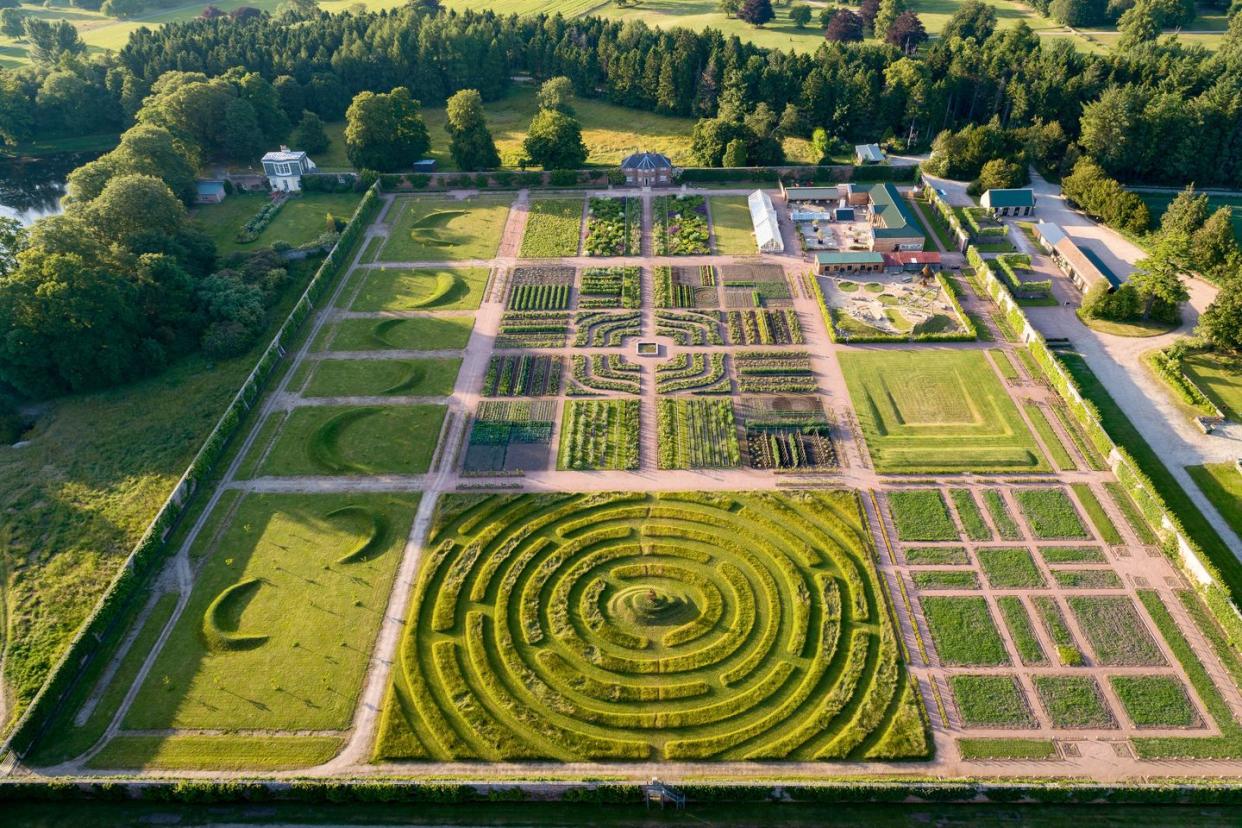
A circular grass maze and eyebrow hedges curving through the cherry orchard (far left) are among the flourishes that turn the garden’s crop-laden grids into a warren of discovery.
The Owners
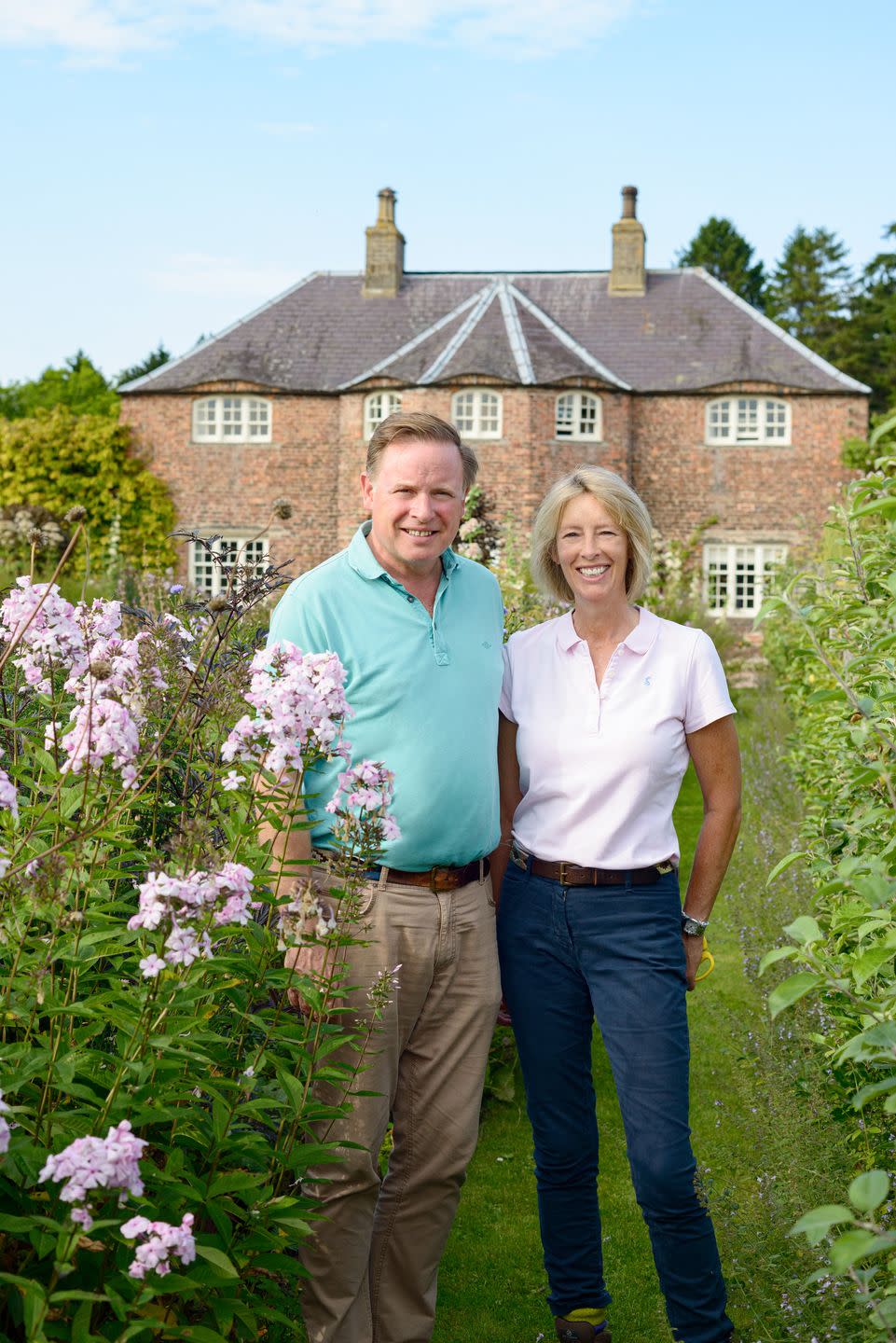
Owners Angus and Zara Gordon Lennox.
Gardener Ed Bollom
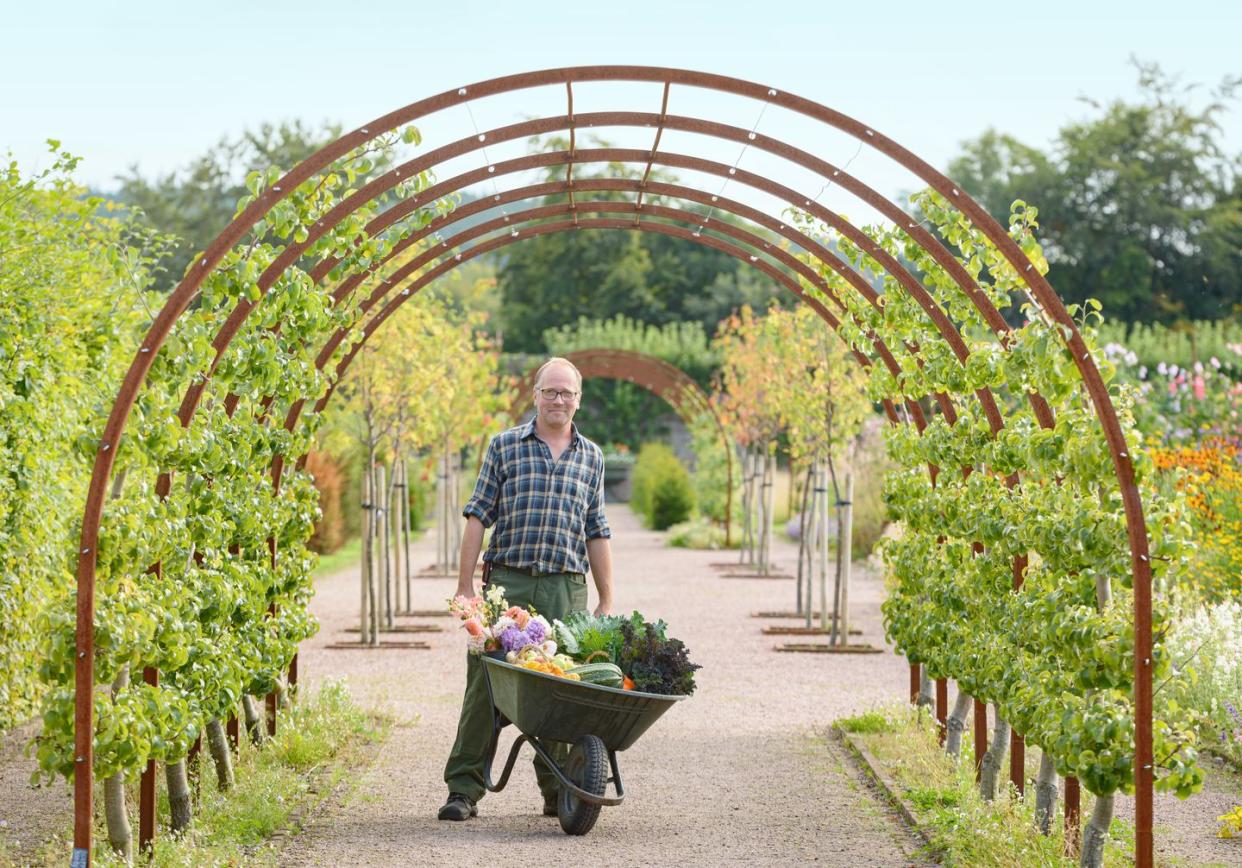
Under an arch of pears, head gardener Ed Bollom wheels a barrowful of produce to the potting shed shop to sell to visitors.
The Greenhouse
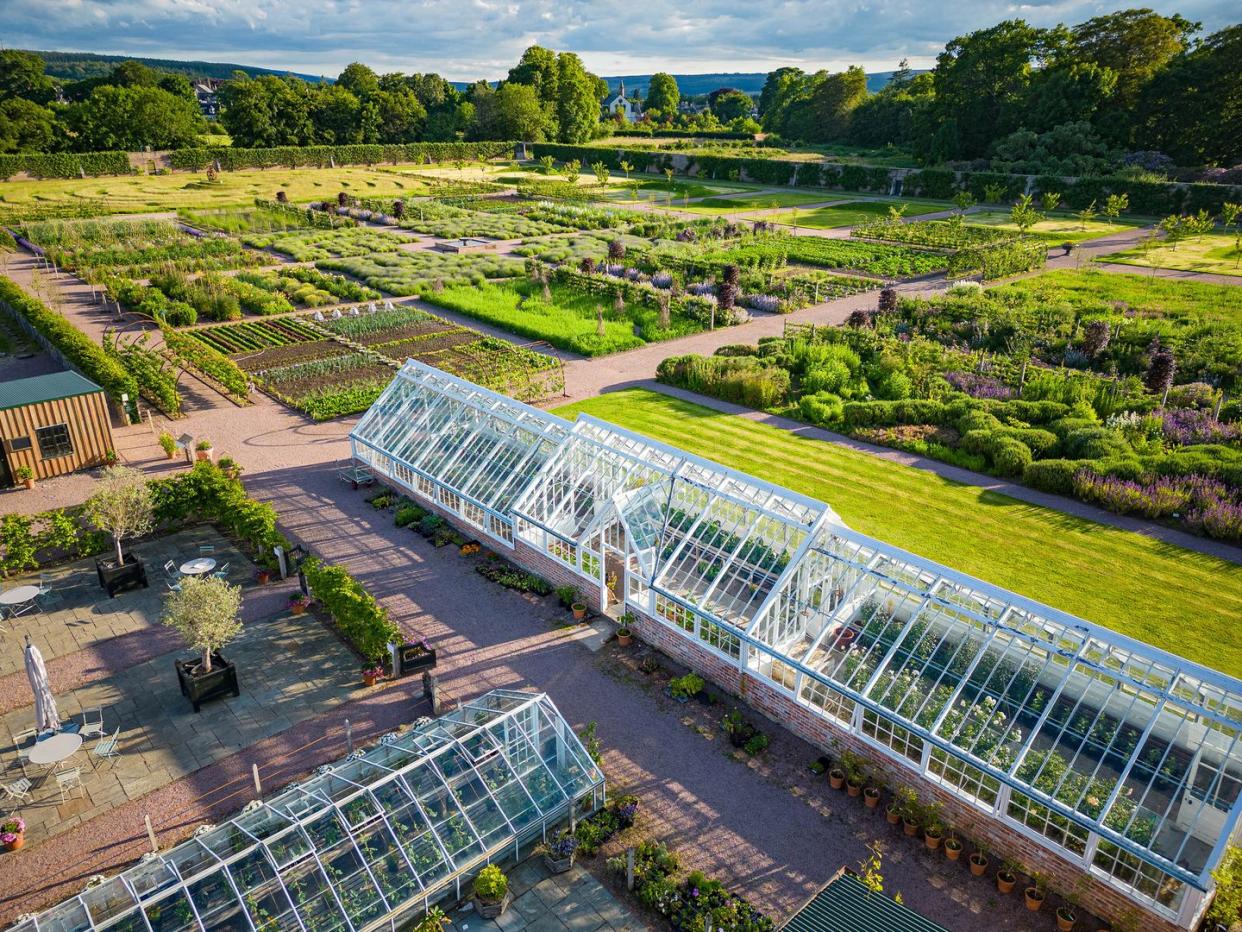
The walled garden teems with life in June: Lavender ribbons loop around the dipping pond; cooper beech beehive-shaped topiaries bring height to the herbaceous border along the central path; and in the herb garden, sage, chamomile, tarragon, chives, thyme, and more bloom in the pockets of crisscrossing rosemary hedges.
Dahlia
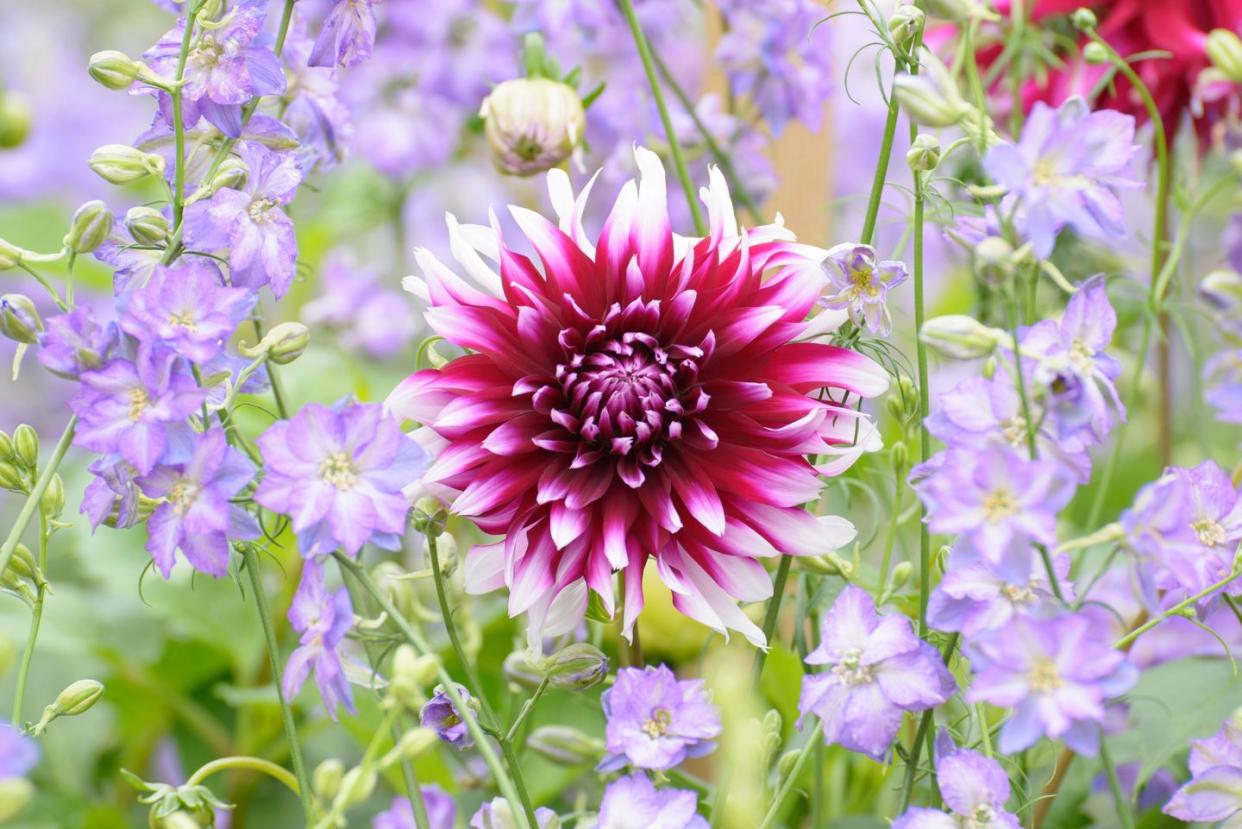
Dahlia Table Dancer and larkspur, grown to decorate the castle café and cottages on the estate and for use by local florists.
Laxton’s Superb Apples
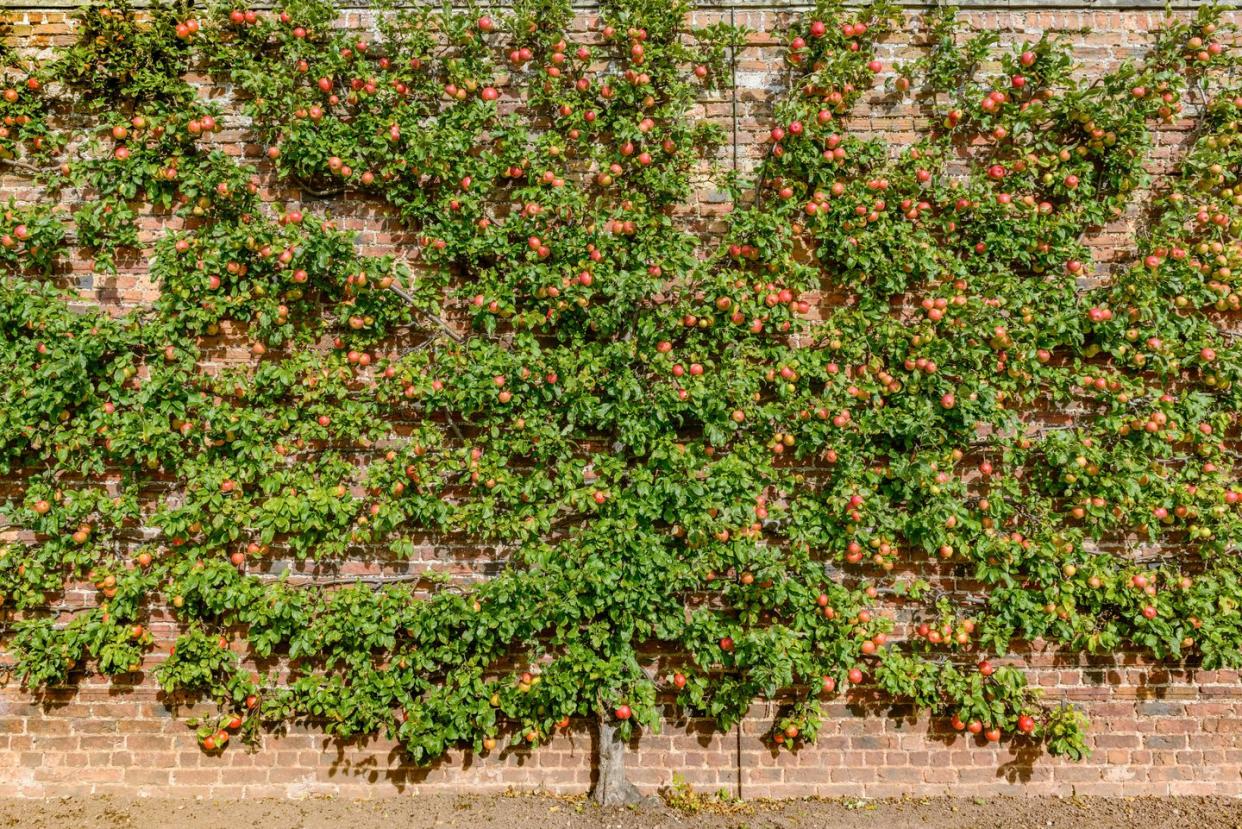
A wall-trained Laxton’s Superb apple on original brickwork crafted on the estate.
Winter in the Garden
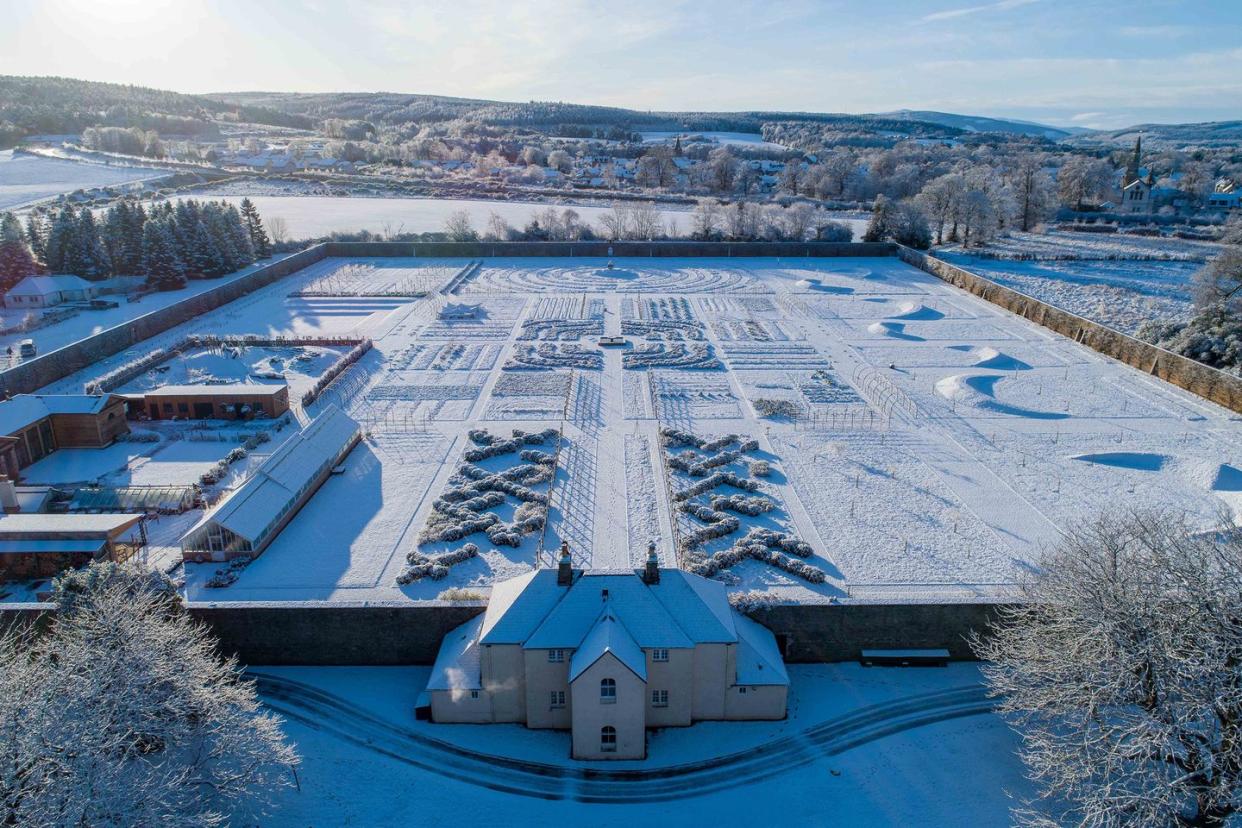
The snow-dusted Gordon Castle walled garden, nestled in the Scottish Highlands, in January.
As planned, everything grown in the garden is put to use, however decorative. Strawberries, plums, and elderflowers are used for jams, gins, and preserves; the glasshouse shelters tomatoes and chilies for the café and farm shop; beds are planted with about 35 varieties of tulips and perennials for floral bouquets and seed packets, along with picking borders for local florists; fruit tunnels and step-over apple trees line some of the paths. “The whole year there are interesting things going on,” says Maynard.
These days guests pay an entrance fee and everyone is invited, unlike the 19th- and early 20th-century Downton Abbey-esque house parties held by the dukes of Gordon (later Richmond and Gordon) for their wealthy and titled friends, which the garden’s former incarnation would have served.
The guests, gathered for fashionable Highland blood sports such as deer stalking and fishing on the Spey, would bring their retinues, and the numbers to be accommodated and fed in the castle—at 568 feet in length, then one of the largest houses in Scotland—would sometimes swell to nigh on 100.
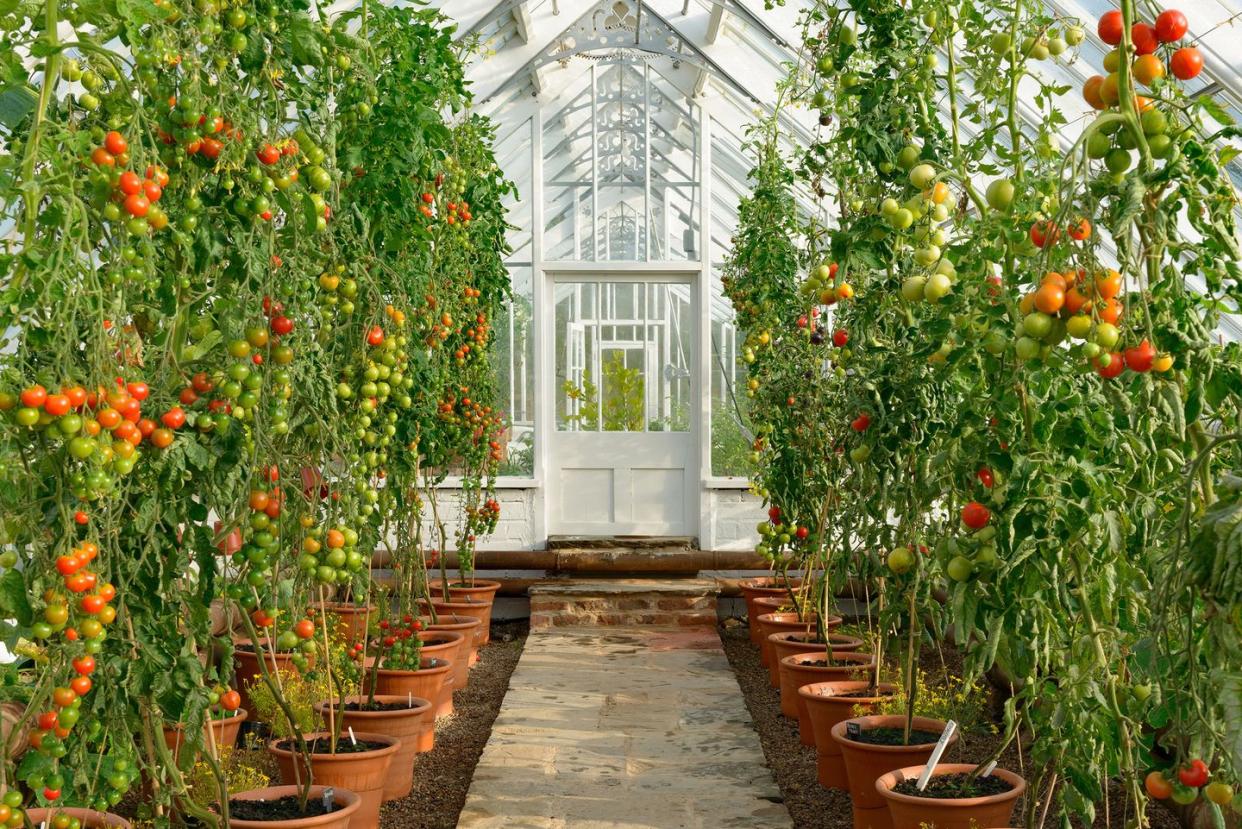
Such grandiose living was not to last. After being used as a military hospital in the First World War, sold to the Crown in 1938 to pay death duties, and used as soldiers barracks during the Second World War, the castle stood empty for several years. In 1954 it was brought back into the family by Lieutenant General Sir George Gordon Lennox, Angus’s grandfather, along with 1,000 acres of the estate.
Sir George knocked down most of the Georgian baronial additions to the castle, which were in a state of some decay, leaving the original 15th-century tower and an attractive Georgian wing to make a 10-bedroom home of a rather more manageable size. Meanwhile, his wife, Nancy, used the walled garden for commercial fruit production, although there was no sign of this by the time Angus and Zara took over.
Today anyone searching for the castle’s chatelaine can usually find her head down in the borders, digging, weeding, and hoeing, with no airs and graces. “I count myself as a full-time gardener; I feel guilty for every hour I am not spending there,” says Zara.
As Maynard observes, it is the couple’s input that makes this garden so special. “I have never come across it before, how much physical labor they have done themselves. They work so hard and have pulled it off. It is incredible.”
How to Visit Gordon Castle Gardens
Guests are invited to roam the garden year-round or explore its fragrant spirits and potions—as well as private bookings of the castle or cottages—at gordoncastle.co.uk.

VERANDA Magazine
veranda.com
$18.00
Featured in the January/February 2024 issue of VERANDA. Landscape Design by Arne Maynard; Photography by Ed Bollom; Written by Caroline Donald.
You Might Also Like
